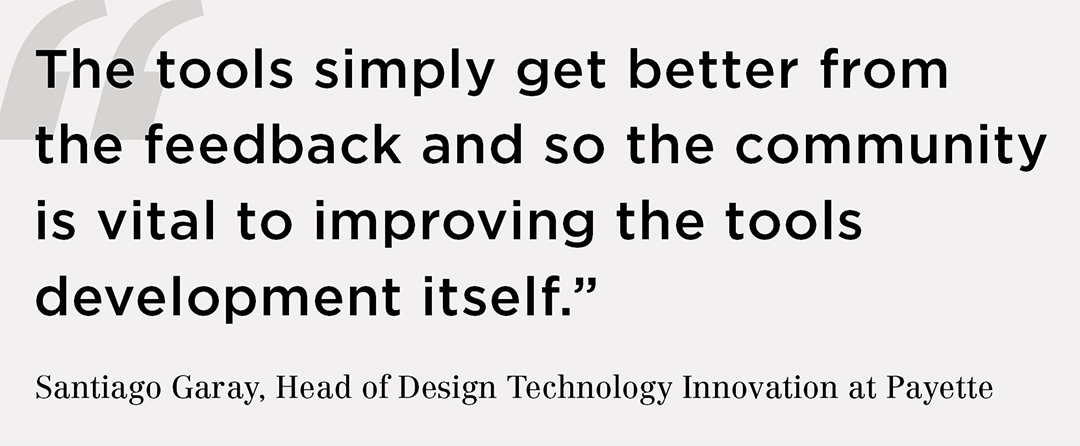PAYETTE Head of Design Technology Innovation Santiago Garay and Building Scientist Chris Mackey spoke with Architosh on how integrating computational tools in our design process has added value to both our firm and projects.

At the most basic level, computational design methodologies are leading to innovative architectural solutions at PAYETTE that remove the intuition and guesswork involved in performance-driven building design. Naturally, this enhances the firm’s capacity to deliver its design and technical services.

The four primary tools being developed or utilized at PAYETTE consists of Grasshopper, Ladybug, HumanUI, and SkinDesigner. Grasshopper is the programmatic and algorithmic background environment for Rhino. Ladybug is a collection of tools that support environmental simulation. HumanUI, first used at PAYETTE for the XiangYa Hospital, is a user-interface front-end for Grasshopper applications and was developed by Andrew Heuman at NBBJ. And finally, SkinDesigner, which was developed by Santiago Garay, is a Grasshopper plugin that enables rapid generation of facade geometries for building massing models. All these tools were utilized to solve the facade window box optimization at the XiangYa Hospital.
Seeing Garay and Mackey’s bespoke digital tools put to work like this on real projects leads one to think of one obvious conclusion: PAYETTE has an edge with these tools and the skill sets to drive them.
So it is somewhat shocking to learn that PAYETTE is sharing its digital tools with the world. Garay explains that SkinDesigner, his tool, is being open-sourced and shared just like the other tools in the Grasshopper universe (e.g., Ladybug, Honeybee, HumanUI). I asked both of them to explain the ultimate benefits of sharing their bespoke tools work with the world.

Read the article.
Related:
The Value of Shade in Changsha China
SkinDesigner Plugin for Grasshopper is now Available!
The Evolution of PAYETTE’s Parametric Façade Tools
The Next Thing in Parametric Design

